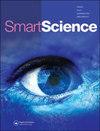静态和动态复合效应对水基氧化铁纳米流体导热性的影响:实验与理论
IF 1.4
Q2 MULTIDISCIPLINARY SCIENCES
引用次数: 1
摘要
纳米流体异常热输运行为的特殊机理尚未确定。本研究首次利用改进的有效介质理论(EMTs)评价了磁铁矿(MH)纳米颗粒分散去离子水(DW)纳米流体(MH/DW)的导热性。为了分析球形纳米颗粒分散纳米流体的热导率增强的异常行为,对emt进行了修正,同时考虑了静态和动态效应。采用化学共沉淀法合成了~20 nm的MH纳米颗粒。在DW中加入不同的MH纳米颗粒,制备了MH/DW纳米流体,并使用KD2 pro装置测量了热导率。热导率随MH纳米颗粒浓度的增加呈线性增加(~ 32%),随温度的升高呈非线性增加。现有的Maxwell和Maxwell Gantt EMA (MG-EMA)模型对MH/DW纳米流体的实验热导率存在严重的预测不足。同时考虑MH纳米颗粒静态和动态机制的修正模型与MH/DW纳米流体在高温下的实验热导率具有相当好的一致性。修正后的模型通过引入势参数,为分析不同类型纳米流体的热物理性质打开了新的窗口。图形抽象本文章由计算机程序翻译,如有差异,请以英文原文为准。
Static and Dynamic Combined Effects on the Thermal Conductivity of Water Based Ironoxide Nanofluids: Experiments and Theories
ABSTRACT Reasoning of particular mechanism of anomalous thermal transport behaviors is not identified yet for the nanofluids. In this research, the thermal conductivity of maghemite (MH) nanoparticles dispersed deionized water (DW) nanofluids (MH/DW) has been evaluated for the first time using the modified effective medium theories (EMTs). EMTs have been modified with the consideration of static and dynamic effects combinedly for the analysis of anomalous behaviors of thermal conductivity enhancements of the spherical nanoparticles dispersed nanofluids. MH nanoparticles (~20 nm) were synthesized using chemical co-precipitation techniques. MH/DW nanofluids were prepared with the varying MH nanoparticles loading in DW and thermal conductivity was measured using KD2 pro device. The thermal conductivity enhancement (~32 %) was found to be increased linearly with the increasing MH nanoparticle concentration and nonlinearly with the increasing temperature. Existing Maxwell and Maxwell Gantt EMA (MG-EMA) models exhibited awful under-prediction from experimental thermal conductivities of MH/DW nanofluids. Modified model with considering static and dynamic mechanisms of MH nanoparticles combinedly showed reasonably very good agreement with the experimental thermal conductivities of MH/DW nanofluids at elevated temperature. This modified model opens the new windows to analyze the insight of the thermophysical properties of various types of nanofluids by introducing potential parameters. Graphical abstract
求助全文
通过发布文献求助,成功后即可免费获取论文全文。
去求助
来源期刊

Smart Science
Engineering-Engineering (all)
CiteScore
4.70
自引率
4.30%
发文量
21
期刊介绍:
Smart Science (ISSN 2308-0477) is an international, peer-reviewed journal that publishes significant original scientific researches, and reviews and analyses of current research and science policy. We welcome submissions of high quality papers from all fields of science and from any source. Articles of an interdisciplinary nature are particularly welcomed. Smart Science aims to be among the top multidisciplinary journals covering a broad spectrum of smart topics in the fields of materials science, chemistry, physics, engineering, medicine, and biology. Smart Science is currently focusing on the topics of Smart Manufacturing (CPS, IoT and AI) for Industry 4.0, Smart Energy and Smart Chemistry and Materials. Other specific research areas covered by the journal include, but are not limited to: 1. Smart Science in the Future 2. Smart Manufacturing: -Cyber-Physical System (CPS) -Internet of Things (IoT) and Internet of Brain (IoB) -Artificial Intelligence -Smart Computing -Smart Design/Machine -Smart Sensing -Smart Information and Networks 3. Smart Energy and Thermal/Fluidic Science 4. Smart Chemistry and Materials
 求助内容:
求助内容: 应助结果提醒方式:
应助结果提醒方式:


